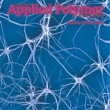Home > Press > Nanofibre morphology control
 |
Abstract:
Rigid aromatic polymers have been shown to give high performance in industrial applications that require demanding operating conditions.
Nanofibre morphology control
Germany | Posted on September 27th, 2012In newly published research, Kunio Kimura and colleagues report that the morphology of poly(p-oxybenzoyl) precipitates formed by the co-polymerisation of 4-acetoxybenzoic acid with trifunctional co-monomers based on 3,5-diacetoxybenzoic acid (DABA) is significantly influenced by the structure of the co-monomer and the solvent. As part of their research the authors varied the co-monomer, solvent, co-polymer ratio, temperature of polymerisation, and concentration. The multitude of conditions gives rise to fibrils, needles, spheres, spheres with needle-like structures on the surface, and nanofibre networks. The article will be highlighted on the cover of the forthcoming special issue on fibres of the Journal of Applied Polymer Science.
Nanofibre networks are widely investigated because of their potential to be used for protective clothing, high performance filters, and as high-strength fillers for polymer composites. Many nanofibre networks are fabricated by electrospinning; however, the nature of rigid-rod polymer structures means they are often not soluble in solvents required for this process. Here the researchers used the alternative method of reaction-induced phase separation during isothermal solution polymerisation. This technique circumvents the problem of insolubility because the morphology is created by the phase-separation of the oligomers.
Of the co-monomers used, only polymerisation with DABA itself produces nanofibre networks. These interconnected structures resemble non-woven fabrics prepared by more conventional methods. Alternative polymerisation conditions instead produce differently shaped precipitates, such as the jellyfish-like aggregates shown below.
The networks are composed of fibrillar crystals connected to each other at nodal points with the poly(p-oxybenzoyl) molecules aligned along the long direction of the crystals. The number of fibres grown from one nodal point, the distance between connected nodal points, the average fibre length and the average number of connected nodal points can all be varied by changing the concentration.
The study provides important insight into nanofibre network formation. This, combined with the excellent thermal stability and the ability to control the structure of the nanofibre networks, should prove valuable for non-woven fabric applications.
####
For more information, please click here
Copyright © Wiley-VCH Materials Science Journals
If you have a comment, please Contact us.Issuers of news releases, not 7th Wave, Inc. or Nanotechnology Now, are solely responsible for the accuracy of the content.
| Related Links |
| Related News Press |
News and information
![]() Simulating magnetization in a Heisenberg quantum spin chain April 5th, 2024
Simulating magnetization in a Heisenberg quantum spin chain April 5th, 2024
![]() NRL charters Navy’s quantum inertial navigation path to reduce drift April 5th, 2024
NRL charters Navy’s quantum inertial navigation path to reduce drift April 5th, 2024
![]() Discovery points path to flash-like memory for storing qubits: Rice find could hasten development of nonvolatile quantum memory April 5th, 2024
Discovery points path to flash-like memory for storing qubits: Rice find could hasten development of nonvolatile quantum memory April 5th, 2024
Discoveries
![]() Chemical reactions can scramble quantum information as well as black holes April 5th, 2024
Chemical reactions can scramble quantum information as well as black holes April 5th, 2024
![]() New micromaterial releases nanoparticles that selectively destroy cancer cells April 5th, 2024
New micromaterial releases nanoparticles that selectively destroy cancer cells April 5th, 2024
![]() Utilizing palladium for addressing contact issues of buried oxide thin film transistors April 5th, 2024
Utilizing palladium for addressing contact issues of buried oxide thin film transistors April 5th, 2024
Materials/Metamaterials/Magnetoresistance
![]() Nanoscale CL thermometry with lanthanide-doped heavy-metal oxide in TEM March 8th, 2024
Nanoscale CL thermometry with lanthanide-doped heavy-metal oxide in TEM March 8th, 2024
![]() Focused ion beam technology: A single tool for a wide range of applications January 12th, 2024
Focused ion beam technology: A single tool for a wide range of applications January 12th, 2024
Announcements
![]() NRL charters Navy’s quantum inertial navigation path to reduce drift April 5th, 2024
NRL charters Navy’s quantum inertial navigation path to reduce drift April 5th, 2024
![]() Discovery points path to flash-like memory for storing qubits: Rice find could hasten development of nonvolatile quantum memory April 5th, 2024
Discovery points path to flash-like memory for storing qubits: Rice find could hasten development of nonvolatile quantum memory April 5th, 2024
Industrial
![]() Boron nitride nanotube fibers get real: Rice lab creates first heat-tolerant, stable fibers from wet-spinning process June 24th, 2022
Boron nitride nanotube fibers get real: Rice lab creates first heat-tolerant, stable fibers from wet-spinning process June 24th, 2022
![]() Nanotubes: a promising solution for advanced rubber cables with 60% less conductive filler June 1st, 2022
Nanotubes: a promising solution for advanced rubber cables with 60% less conductive filler June 1st, 2022
![]() Protective equipment with graphene nanotubes meets the strictest ESD safety standards March 25th, 2022
Protective equipment with graphene nanotubes meets the strictest ESD safety standards March 25th, 2022
![]() OCSiAl receives the green light for Luxembourg graphene nanotube facility project to power the next generation of electric vehicles in Europe March 4th, 2022
OCSiAl receives the green light for Luxembourg graphene nanotube facility project to power the next generation of electric vehicles in Europe March 4th, 2022
|
|
||
|
|
||
| The latest news from around the world, FREE | ||
|
|
||
|
|
||
| Premium Products | ||
|
|
||
|
Only the news you want to read!
Learn More |
||
|
|
||
|
Full-service, expert consulting
Learn More |
||
|
|
||








